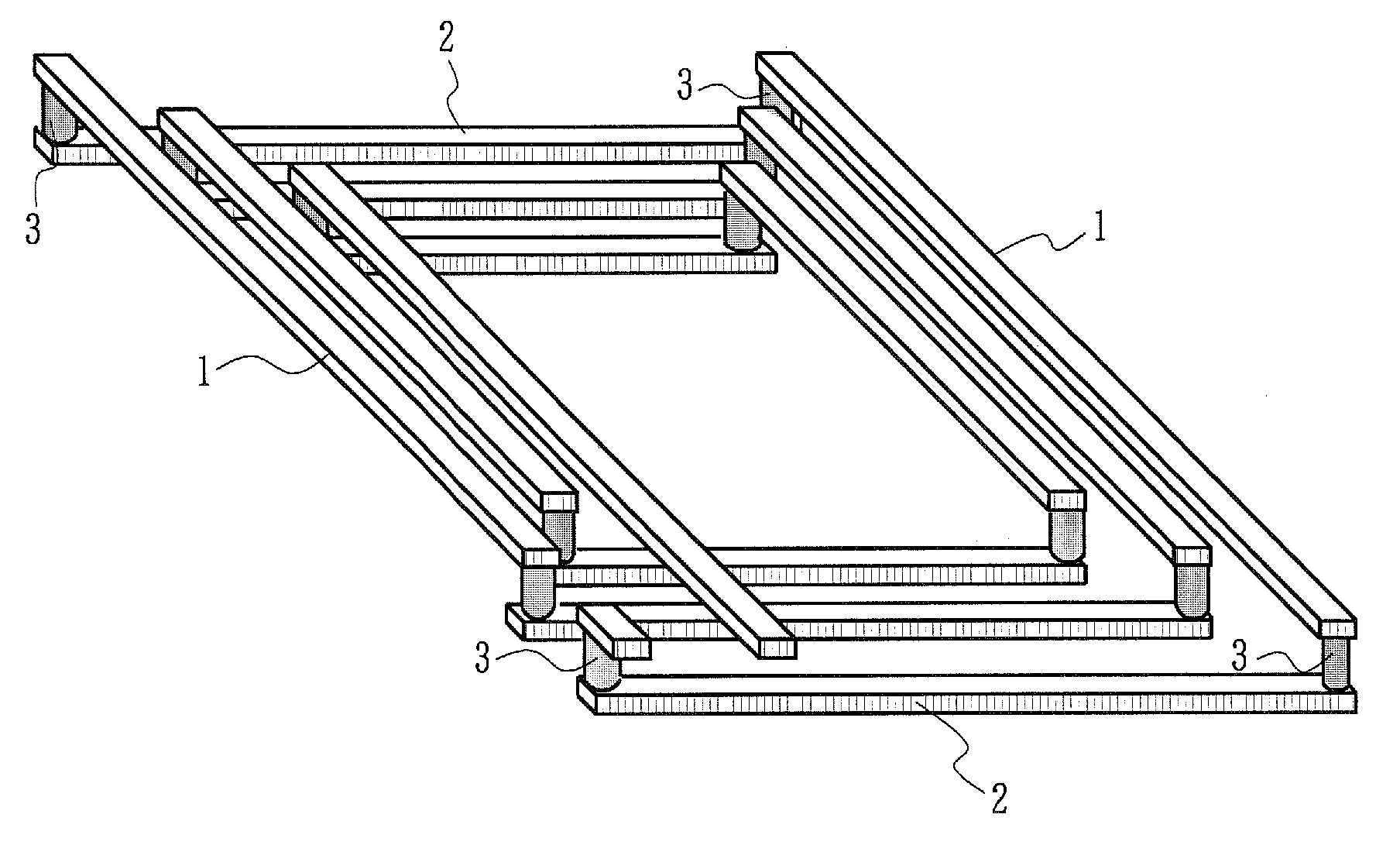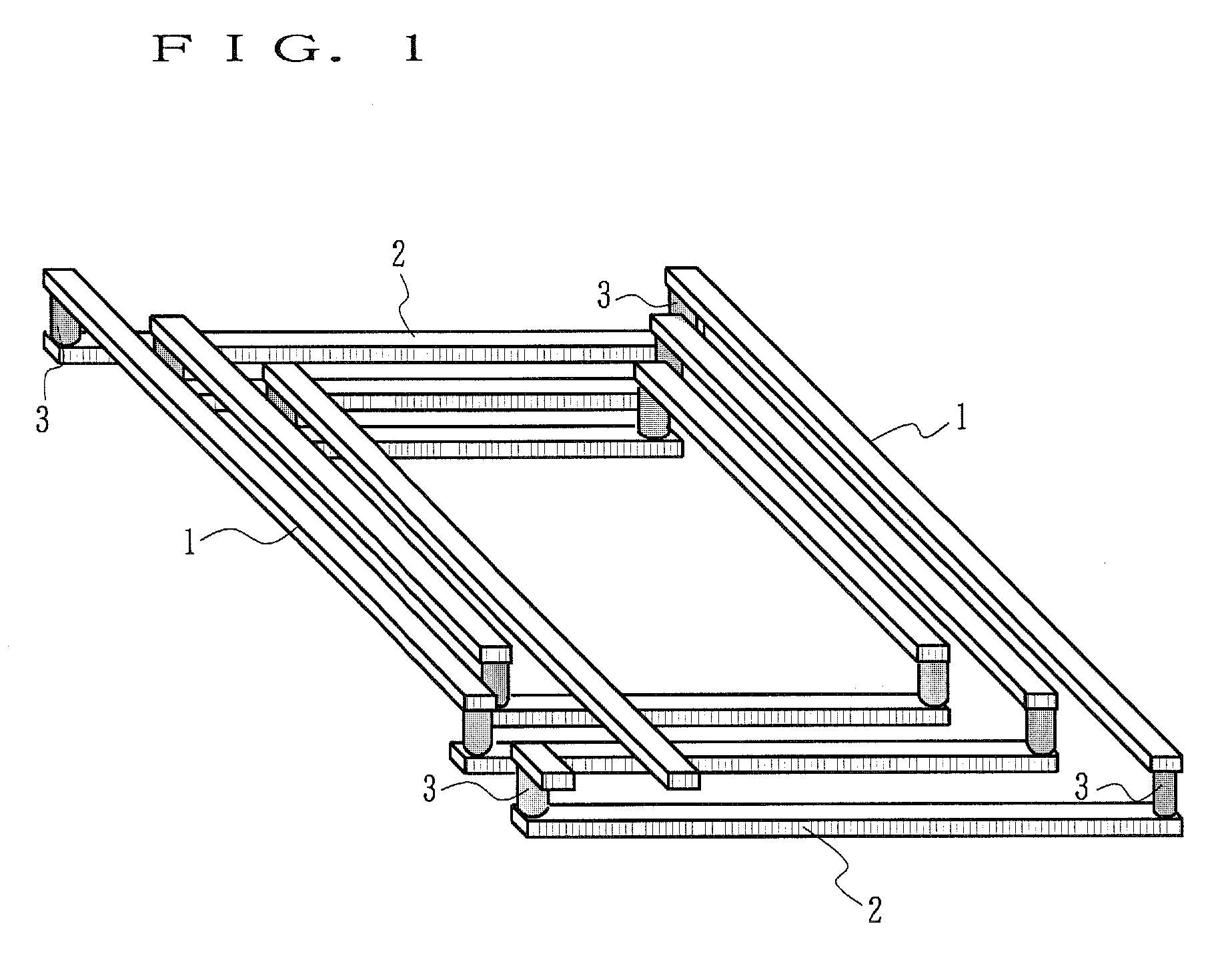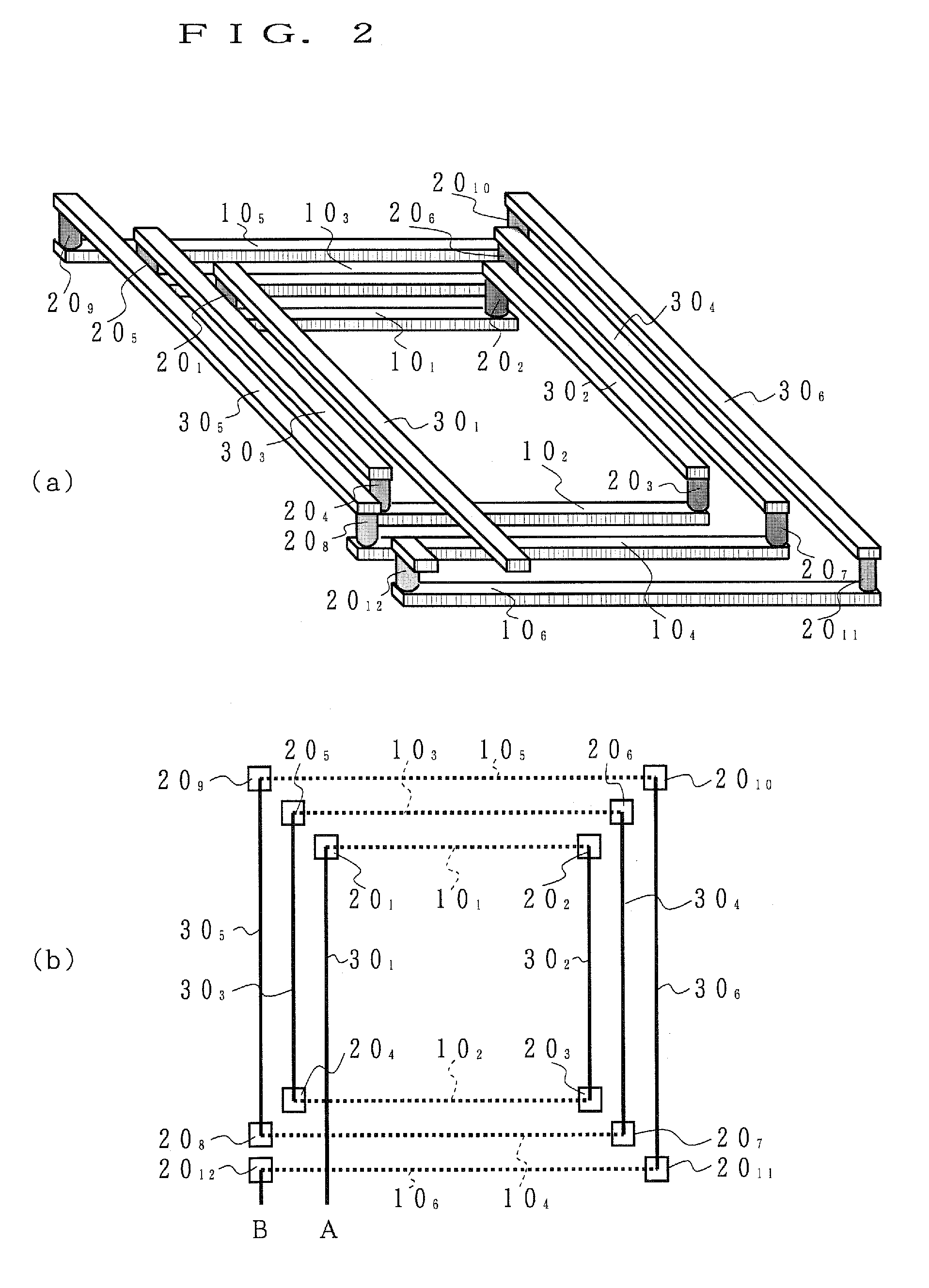Inductor element, integrated circuit device, and three-dimensional circuit device
- Summary
- Abstract
- Description
- Claims
- Application Information
AI Technical Summary
Benefits of technology
Problems solved by technology
Method used
Image
Examples
first embodiment
[0076]Taking the above into consideration, the inductor element according to the first embodiment of the present invention is described in reference to FIGS. 2 to 5.
[0077]FIGS. 2(a) and 2(b) are diagrams illustrating the structure of the inductor element according to the first embodiment of the present invention. FIG. 2(a) is a conceptual perspective diagram, and FIG. 2(b) is a conceptual projection plan diagram.
[0078]As shown in the figures, straight first coil elements 10 are formed of first layer metal wires and second coil elements 30 which run in a direction perpendicular to the first coil elements are formed of second layer metal wires, and the first coil elements 10 and the second coil elements 30 are alternately connected through connection vias 20 so that a single coil that winds clockwise is formed.
[0079]In this case the direction in which the coil elements are wired is the same as that in which main wires, for example bus lines, are wired in each layer.
[0080]Here, the coi...
second embodiment
[0101]Next, the inductor element according to the second embodiment of the present invention is described in reference to FIG. 6. The inductor element according to the second embodiment is different from that according to the first embodiment only in its pattern as seen from the top, and the basic manufacturing process is exactly the same, and therefore only the conceptual projection plan diagram is described.
[0102]FIG. 6 is a conceptual projection plan diagram showing the inductor element according to the second embodiment of the present invention, and the projection plan pattern is the same as that for the conventional inductor element in FIG. 10. In the present case, two leads are formed using second layer metal wires.
[0103]In the second embodiment, connection vias are formed in the corners of the rectangle, and therefore the first coil elements 108 and 1010 formed of first layer metal wires are bent, unlike in the above first embodiment, but the peripheral wires that cross the c...
third embodiment
[0105]Next, the inductor element according to the third embodiment of the present invention is described in reference to FIG. 7. The inductor element according to this embodiment is gained by layering two inductor elements as in the above first embodiment and connecting them.
[0106]FIG. 7(a) is a conceptual projection plan diagram showing the inductor element according to the third embodiment of the present invention, FIG. 7(b) is a schematic perspective diagram showing a corner, FIG. 7(c) is a schematic perspective diagram showing the portion that leads out from point B, and FIG. 7(d) is a conceptual perspective diagram showing the connection portion between two sub-coils.
[0107]Here, the coil elements 10, 30, 50 and 70 may be formed in a line and space pattern with a width of 1 μm, for example.
[0108]In the figure, the first coil elements 10 are the dotted lines, the second coil elements 30 are the solid lines, the third coil elements 50 are the one-dot chain lines, and the fourth co...
PUM
 Login to View More
Login to View More Abstract
Description
Claims
Application Information
 Login to View More
Login to View More - R&D
- Intellectual Property
- Life Sciences
- Materials
- Tech Scout
- Unparalleled Data Quality
- Higher Quality Content
- 60% Fewer Hallucinations
Browse by: Latest US Patents, China's latest patents, Technical Efficacy Thesaurus, Application Domain, Technology Topic, Popular Technical Reports.
© 2025 PatSnap. All rights reserved.Legal|Privacy policy|Modern Slavery Act Transparency Statement|Sitemap|About US| Contact US: help@patsnap.com



